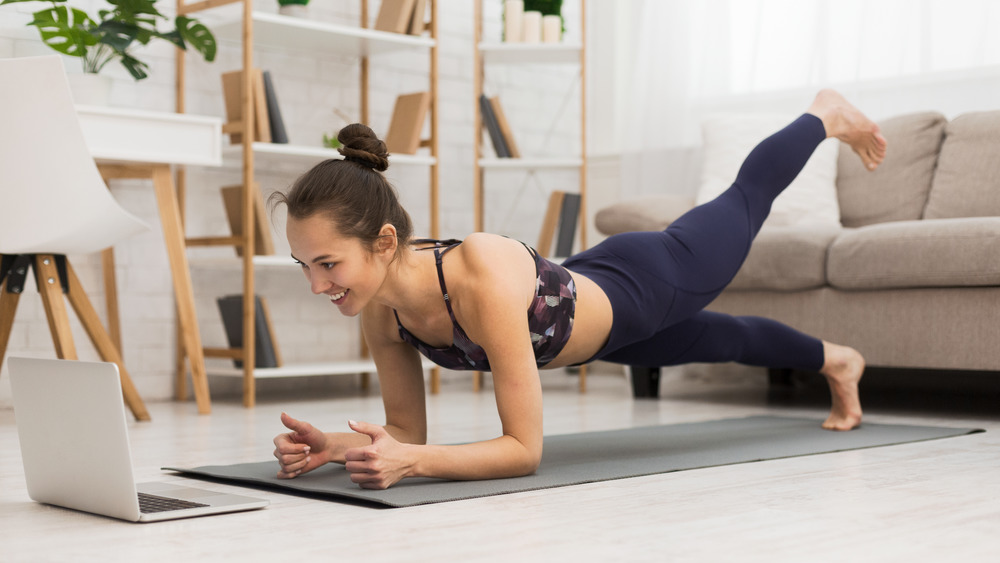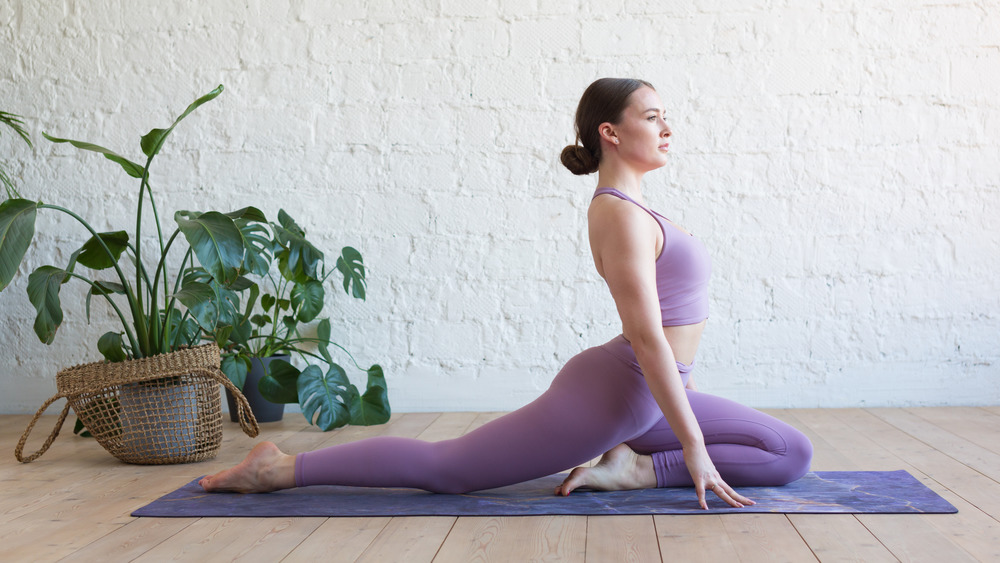The Real Reason Runners Should Try Yoga
Runners looking to improve their pace or avoid injury won't get there by simply adding more mileage to their weekly training. Adding cross-training in the form of a regular yoga practice will have many benefits for runners, from improved mobility and core strength, to boosted recovery and a more relaxed attitude on race day.
Yoga is critical if you tend to feel sore after runs, or when you wake up the next morning. A gentle yoga practice that focuses on slower, softer movements like a reclining spinal twist or reclined pigeon pose can help. "It relieves soreness and tension in your hard-working muscles and restores range of motion so you can run better the next time you hit the road," Rebecca Pacheco, founder of Om Athlete, told Runners World.
But a practice can be more dynamic and powerful as well, helping increase your overall strength and balance so that you're less inclined to fall on technical trails, and less likely to tire on longer runs, thanks to a stronger core. This can also help you avoid injuries caused by muscular imbalances. Because running is mostly done on a single plane, the multi-dimensional nature of yoga helps keep your other muscles as strong as your calves (via Healthline).
What about the brain benefits?
Yoga isn't just great for your body as a runner; it can help you learn to release stress, stay calm in tough situations (like race starts) and even help you regulate your breathing during your runs (via Yoga Journal). You can also gain a better understanding and awareness of your body, which can warn you to slow down, take a drink, or eat a snack during a long run (via Healthline).
You don't need to sign up for an hour-long class every day to reap the benefits of yoga — in fact, a shorter practice done more regularly is likely better for you in the long run, especially if you have a busy schedule and are prone to skipping any workout that isn't a run. A ten-minute flow can have major benefits for a runner, especially if it includes stretches like downward dog, lunges and a pigeon pose to open your hips, work into back muscles, and help loosen tight quadriceps and hamstrings (via mindbodygreen).
Longtime runner Matt Frazier of No Meat Athlete recommends using short at-home yoga sessions before or after runs, and going to full classes on off-days or for a cross-training workout. This way, you can enjoy the consistency of a regular daily practice, plus the effects of a full hour-long session devoted to helping your body strengthen and recover.


